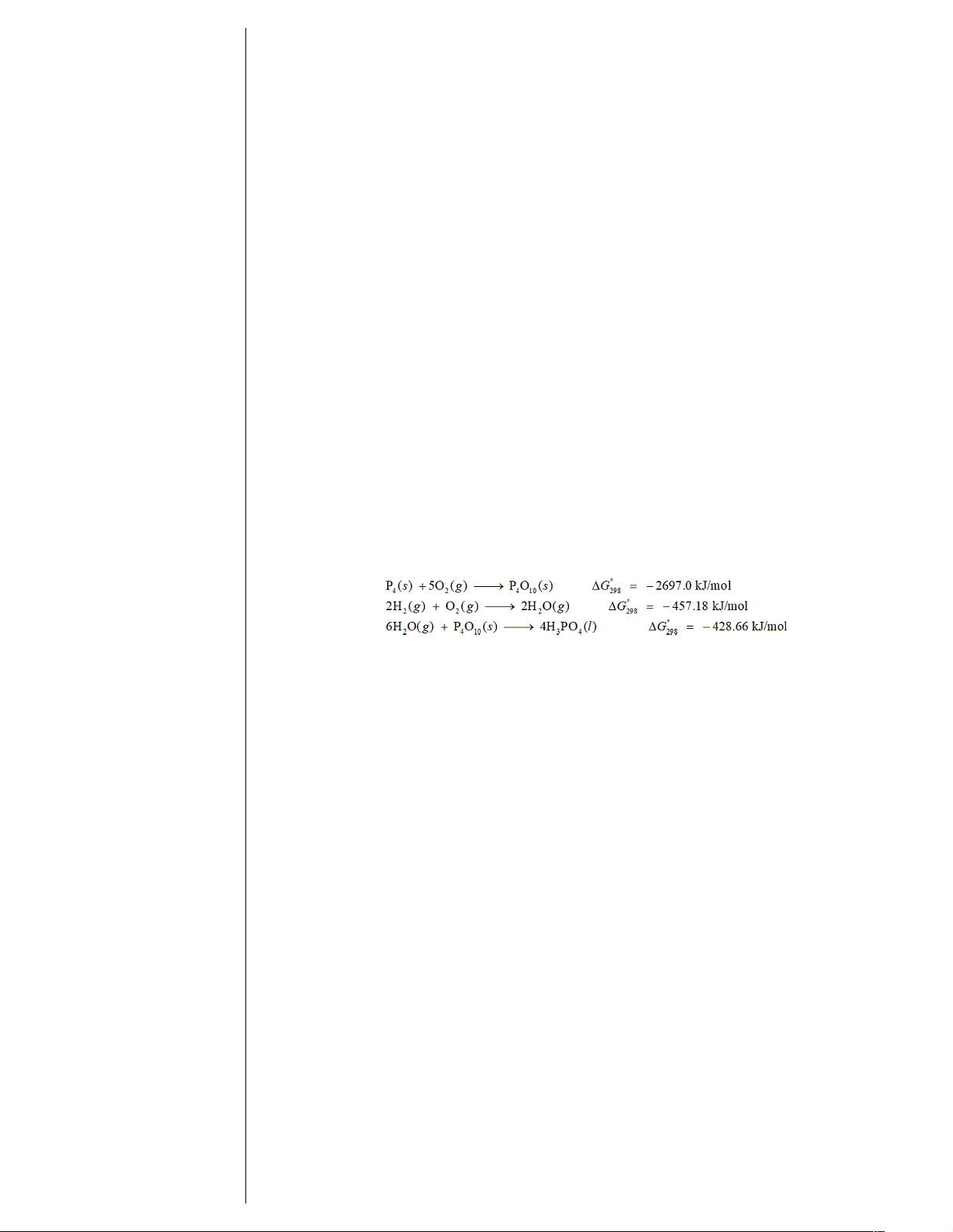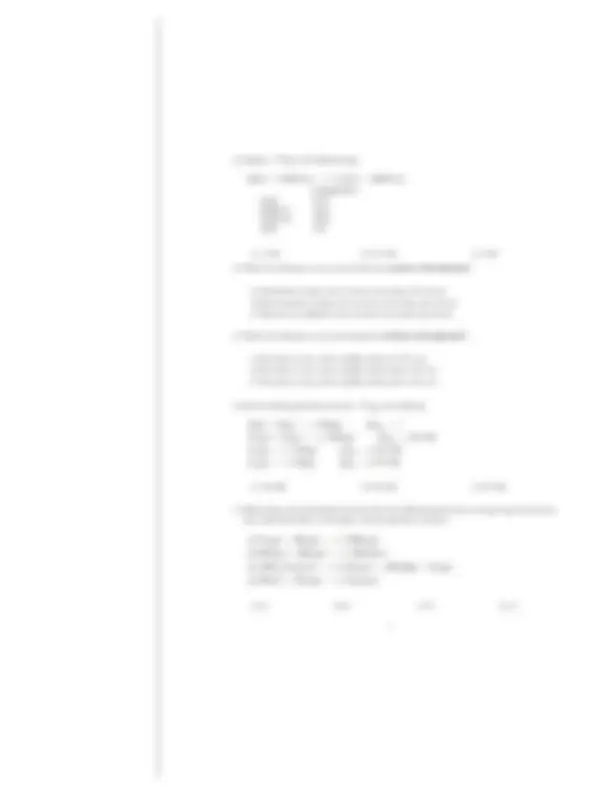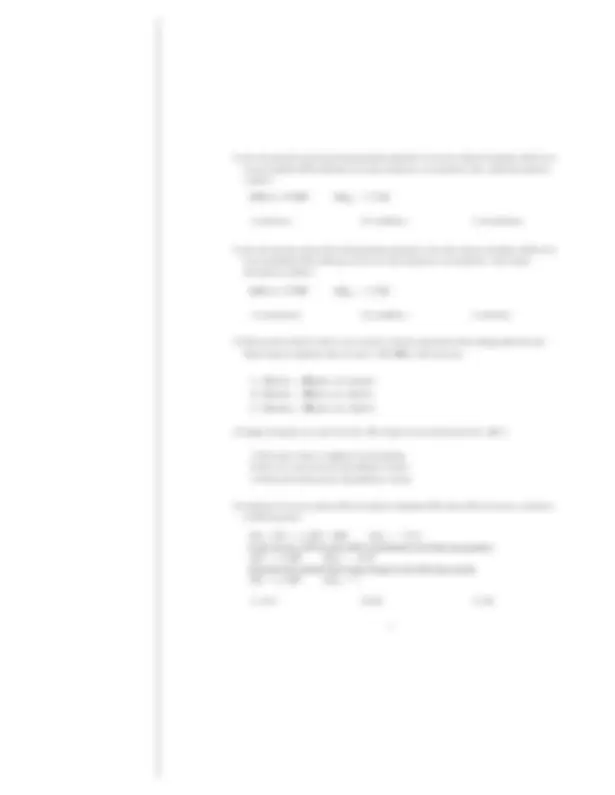





Study with the several resources on Docsity

Earn points by helping other students or get them with a premium plan


Prepare for your exams
Study with the several resources on Docsity

Earn points to download
Earn points by helping other students or get them with a premium plan
Community
Ask the community for help and clear up your study doubts
Discover the best universities in your country according to Docsity users
Free resources
Download our free guides on studying techniques, anxiety management strategies, and thesis advice from Docsity tutors
Solutions to various thermodynamics problems related to gibbs free energy, entropy, and the second and third laws of thermodynamics. It includes questions about calculating gibbs free energy, entropy, and changes in entropy for chemical reactions, as well as questions about the signs of entropy changes for specific processes. The document also covers the difference between standard entropy and entropy for a chemical change, and provides examples of spontaneous and non-spontaneous reactions.
Typology: Study notes
1 / 6

This page cannot be seen from the preview
Don't miss anything!




CHM2046-HW-Ch12 Thermodynamics
A) 2 atm B) 1 atm C) 3 atm
A) - 39.3 kJ B) +70.0 kJ C) +39.3 kJ
Estimate △G° rxn for the following reaction at 307 K.
f for phosphoric acid given the following:
A) - 1124.3 kJ/mol B) - 2697.0 kJ/mol C) - 4497.2 kJ/mol
for each.
2 ( g ), HBrO 4 ( g ), HBr( g )
A) HBr ( g ) < HBrO 4 ( g ) < H 2 ( g ) B) H 2 ( g ) < HBrO 4 ( g ) < HBr( g ) C) H 2 ( g ) < HBr ( g ) < HBrO 4 ( g )
for each.
H 2 O( l ), H 2 O( g ), H 2 O( s )
A) H 2 O( s ) < H 2 O( l ) < H 2 O( g ) B) H 2 O( l ) < H 2 O( g ) < H 2 O( s ) C) H 2 O( s ) < H 2 O( g ) < H 2 O( l )
(a) An ice cube is warmed to near its melting point.
(b) Exhaled breath forms fog on a cold morning.
(c) Snow melts.
A) (a) +, (b)-, (c) - B) (a) - , (b)-, (c) + C) (a) +, (b)-, (c) +
A) (a) +, (b)-, (c) + B) (a) - , (b)-, (c) + C) (a) +, (b)-, (c) -
A) △ S : any change in entropy under any set of conditions. △S°: any change in entropy at standard conditions (1 atm for
gases, 1 M for solutions); if no temperature information is provided, assume the temperature is
B) △ S : any change in entropy under any set of conditions. △ S °: any change in entropy at standard conditions (2 atm for
gases, 0.5 M for solutions); if no temperature information is provided, assume the temperature is 298.15 K
C) △ S : any change in entropy under any set of conditions. △ S °: any change in entropy at standard conditions (1 atm for
gases, 1 m for solutions); if no temperature information is provided, assume the temperature is
for the following change:
°
298
= 100 kJ/mol and △S
°
298
= 250 J/mol
. K. Is the reaction spontaneous at room temperature? If not,
under what temperature conditions will it become spontaneous?
A) The reaction is not spontaneous at room temperature. It will become spontaneous when the the temperature
increased to 300 K or beyond
B) The reaction is not spontaneous at room temperature. It will become spontaneous when the the temperature
increased higher than 400 K or beyond
C) The reaction is spontaneous at room temperature. It will become non-spontaneous when the the temperature
increased to 400 K or beyond.
°
298
= - 50 kJ/mol and △S
°
298
= - 250 J/mol.K. Is the reaction spontaneous at room temperature? If not,
under what temperature conditions will it become spontaneous? If spontaneous, under what temperature conditions will it
become non-spontaneous?
A) The reaction is non-spontaneous at room temperature. It will become spontaneous when the temperature decreased
until lower than 200K
B) The reaction is not spontaneous at room temperature. It will become spontaneous when the temperature increased
until higher than 400K
C) The reaction is spontaneous at room temperature. It will become non-spontaneous when the temperature increased
until higher than 200K
under standard state conditions and 25 °C. Identify each as either spontaneous or non-spontaneous at these conditions.
A) 394.36 kJ/mol, non-spontaneous
B) - 394.36 kJ/mol, spontaneous
C) - 215.36 kJ/mol, spontaneous
under standard state conditions and 25 °C. Identify each as either spontaneous or non-spontaneous at these conditions.
A) 29.4 kJ/mol, non-spontaneous
B) - 29.4 kJ/mol, spontaneous
C) - 235.36 kJ/mol, spontaneous
fructose- 6 - phosphate (F6P) as following, Is the reaction spontaneous or non-spontaneous under standard thermodynamic
conditions?
A) spontaneous B) at equilibrium C) non-spontaneous
fructose- 6 - phosphate (F6P) as following, Is the reverse reaction spontaneous or non-spontaneous under standard
thermodynamic conditions?
A) non-spontaneous B) at equilibrium C) spontaneous
Without doing any calculations, deduce the signs of △ G , △ H , and △ S for this process.
A) △ G positive, △ H negative, and △ S negative
B) △ G negative, △ H positive, and △ S positive
C) △ G negative, △ H negative, and △ S positive
A) The reaction is always at equilibrium from the beginning
B) The reverse reaction proceeds until equilibrium is reached
C) The forward reaction proceeds until equilibrium is reached
the following equation:
A) - 47 kJ B) 13kJ C) - 13kJ